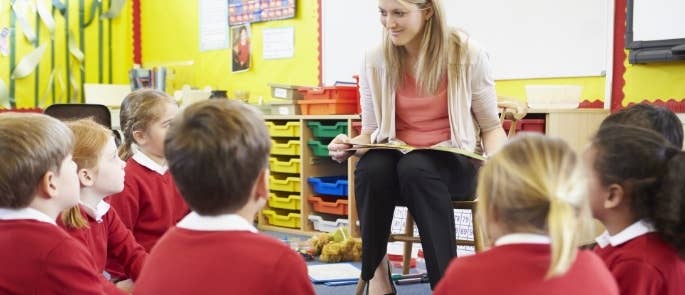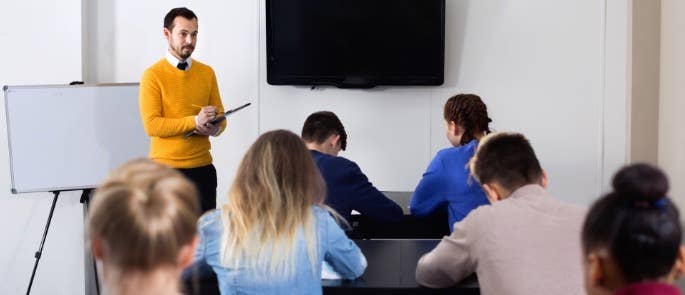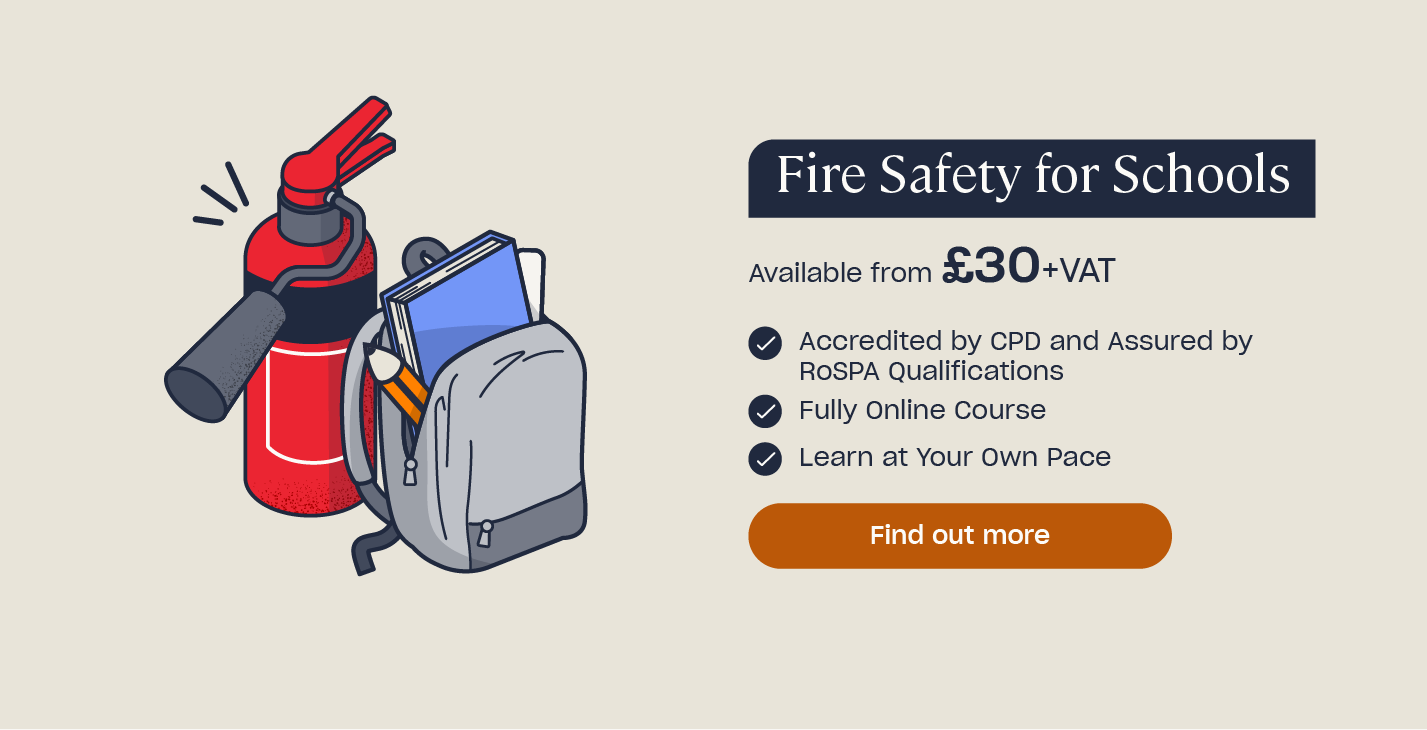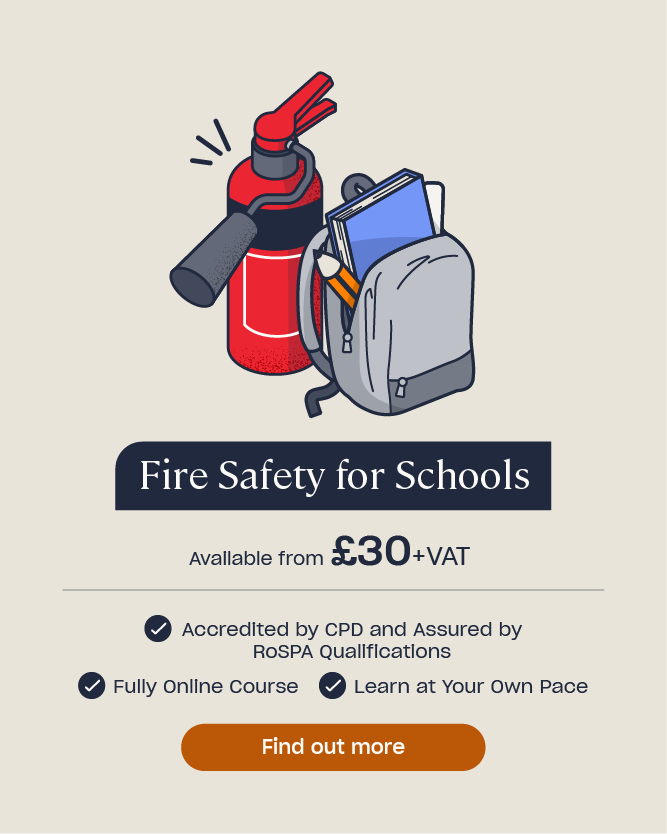How to Carry Out a Fire Drill in Your School
Fires can cause devastating effects to any type of premises. However, schools in particular are at significant risk. They are often filled with numerous fire hazards and potentially hundreds of students, many of which may be vulnerable or don’t fully understand what to do during a fire. This can make evacuation procedures difficult.
Therefore, it’s crucial for schools to establish a clear, step-by-step evacuation plan that explains exactly what everyone should do in the event of a fire. Furthermore, you must carry out regular fire drills. Doing so is not only important for checking that the plan actually works in practice, but also for familiarising everyone in the school – students in particular – with the evacuation process.
This article explains why fire drills are so important in schools and looks at what they entail. It will enable you to carry out useful fire drills that help you refine your evacuation plan and ensure everyone in the school is prepared for an emergency.
The Importance of Fire Drills in Schools
Everyone in a school needs to take part in regular fire drills, as it helps them to fully grasp the building’s escape routes and the instruction they must follow. In particular, fire drills help young students and those still maturing to become accustomed to the process and recognise that they need to take fire safety seriously. This can help to reduce confusion, panic, and any disorderly behaviour.

It also helps familiarise teachers and other responsible people with their role during an emergency. All school staff have a duty to help students evacuate the school during a fire, so it’s vital for them to know what steps to take. If they can practice remaining calm and organised during a fire, they’ll be ready to ensure everyone’s safety when it really counts.
Carrying out a fire drill is crucial, as it helps to:
- Remind staff and students of the sound and/or sight of fire alarms, the location of emergency routes, the assembly point, and any specific fire safety procedures.
- Test that fire safety measures work as intended.
- Assess how quickly people can evacuate from the school.
- Identify areas where alarms or signs may not be clear to people.
- Give fire wardens an opportunity to practice their duties.
- Test personal emergency evacuation plans.
- Ensure that emergency routes and exits are free from obstructions.
- Test your school’s roll calling procedure.
Above all, fire safety is the law. All schools are required by the Regulatory Reform (Fire Safety) Order 2005 and the Education (School Premises) Regulations 1999 to have preventative measures and evacuation procedures in place. Furthermore, they must provide everyone with information, instruction, and training relating to fire safety. Fire drills are an important part of fulfilling this requirement, as it’s unrealistic to expect people to know what to do without practice.
Need a Training Course?
Take a look at our Fire Safety for Schools Training to learn how to follow evacuation procedures as effectively as possible. It explains how you can minimise common fire safety risks in a school and support students and vulnerable people during a fire.
What are the Requirements of a School Fire Drill?
Fire drills in schools are only effective if they are regular and well-planned. Therefore, to get the most out of fire drills, you should understand what they involve. This includes knowing what everyone’s responsibilities are, how often they should occur, and what steps to follow.
How often should fire drills be carried out in schools?
All organisations should carry out fire drills at least annually. However, due to the level of risk, the National Union of Teachers (NUT) recommends that schools carry them out at least once a term. They also recommend that schools run drills at the start of each school year for the benefit of new staff and pupils.
When is the best time to carry out fire drills in schools?
Any time during school hours is appropriate to carry out a fire drill, but it can be particularly beneficial to run each drill at a different time of day to account for unexpected and difficult situations. For example, during an assembly or lunchtime rather than during class. Testing under different circumstances may reveal certain aspects of your school’s evacuation plan that need addressing, which you may not have spotted otherwise.
Are there any Ofsted Fire Safety Requirements?
Fire safety in schools is primarily enforced by local fire and rescue authorities. However, Ofsted and fire authorities do liaise and coordinate to ensure that schools have suitable and sufficient fire safety measures in place.

Therefore, fire and rescue authorities offer advice and support to Ofsted about the provision and management of fire safety. This enables Ofsted to pay attention to whether a school is complying with the necessary legal requirements during inspections. If they identify any significant concerns during an inspection, they will notify the fire and rescue authorities.
For further information about Ofsted and Fire Safety requirements, visit the following link: Protocol between Ofsted and fire rescue authorities
What Should You Consider During School Fire Drills?
To get the most out of a fire drill, it’s crucial for your school to evaluate the evacuation process from start to finish. Doing so helps to identify any issues and take corrective action where necessary, so that the procedure remains effective at all times.
Therefore, during a fire drill your school may:
- Ask certain members of staff (or fire wardens) to not take part in the drill and instead observe.
- Ask a random member of staff to set off the nearest alarm without being shown which is closest. Doing so tests their knowledge of alarm locations and how to activate them.
- Carry out certain drills under the assumption that one of the escape routes is blocked. This tests staff and students’ knowledge of routes that they wouldn’t normally use.
It’s also important to note that staff in schools all have specific fire safety responsibilities, which vary depending on their role and whether they are a designated responsible person. These duties are primarily in the interest of guiding students out of the building, especially those who may have difficulty evacuating. Fire drills are therefore a valuable opportunity for staff to test these duties and eliminate any confusion or uncertainty regarding their role.

To test everyone’s responsibilities, a school fire drill should follow these steps:
- When the alarm sounds, everyone should evacuate immediately.
- Teachers in charge of classes should guide students along the nearest evacuation route to the assembly point. They must keep everyone calm and orderly to ensure the evacuation is as safe and quick as possible. Before leaving the classroom, they should check that no one has been left behind.
- Staff not in charge of a class should keep an eye out for any students that are on their own, such as those exiting toilets, and guide them to the assembly point.
- Designated fire wardens should check that evacuation routes are clear, minimise risks (such as by closing windows and doors), search areas to check that everyone has evacuated, and help vulnerable people where necessary. While doing so, they should make a note of anything that poses a concern. For example, fire doors that don’t open properly or obstructions that block escape routes.
- Those who are part of a vulnerable person’s personal emergency evacuation plan (PEEP) should practice providing assistance. If they face any issues, they should report this to a fire warden.
- Everyone should walk quietly and calmly. It’s important to ensure that students do not run, as this could cause people to knock into each other, fall over, or overcrowd routes and exits. Furthermore, remaining calm and quiet enables people to hear further instructions. For example, if a fire warden tells everyone to take a different route.
- Once everyone reaches the assembly point, students should line up as instructed so teachers can take a roll call. If anyone is missing, it’s crucial for a responsible person to find out why. Were they unable to hear the alarm? Did they panic? Did they get lost? A responsible person should make a note of this and resolve the issue as soon as possible.
School Fire Drill Checklist
Carrying out fire drills in your school doesn’t need to be a complicated process – it just needs to be regular and consistent. Here is a checklist summarising all the requirements and recommendations we discussed throughout this article, so you can remind yourself of what to do each time you carry out a drill:
- Carry out a fire drill at least once a term.
- Run each drill at different times.
- Ask certain members of staff to observe and make notes.
- Test people’s knowledge of alarm locations and alternate fire escape routes.
- Ensure staff know how to help students evacuate.
- Ensure you check the effectiveness of PEEPs.
- Make sure fire wardens practice their duties.
- Make sure people know what to report, such as blocked routes or unclear alarms, and who to report to.
- Test your roll calling procedure.
- Correct any issues you identified during the drill.

Following these steps ensures your school carries out a thorough fire drill and gets the most out of the process. It enables you to keep procedures running as intended and protect both staff and students from harm.
What to Read Next:
- Fire Safety in Schools Training Course
- The Fire Safety Responsibilities of a Fire Warden
- Bonfire and Firework Safety: Assessing the Risks
- Fire Door Safety: What are the Requirements?
- Fire Warden Training Course







